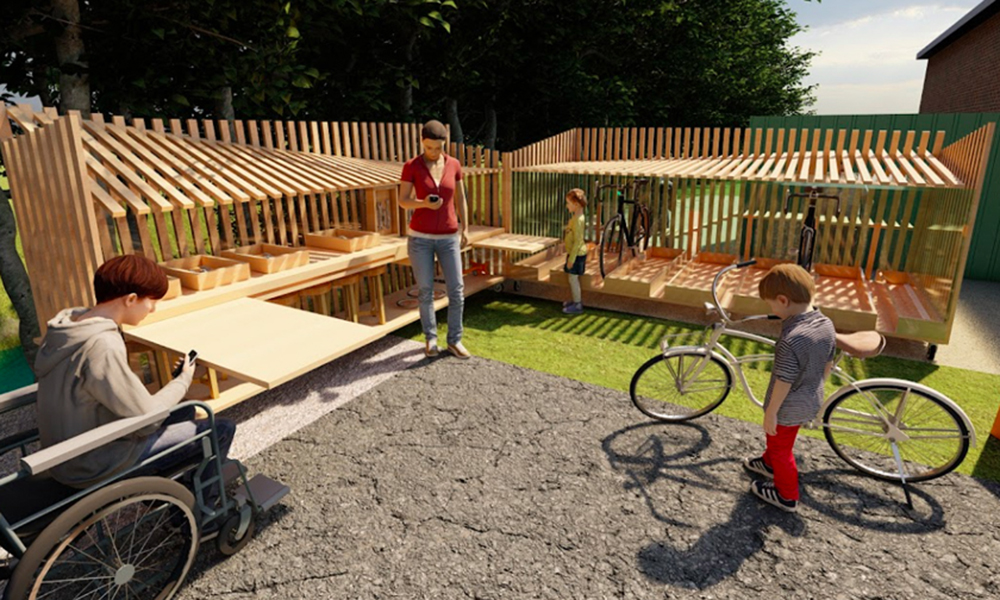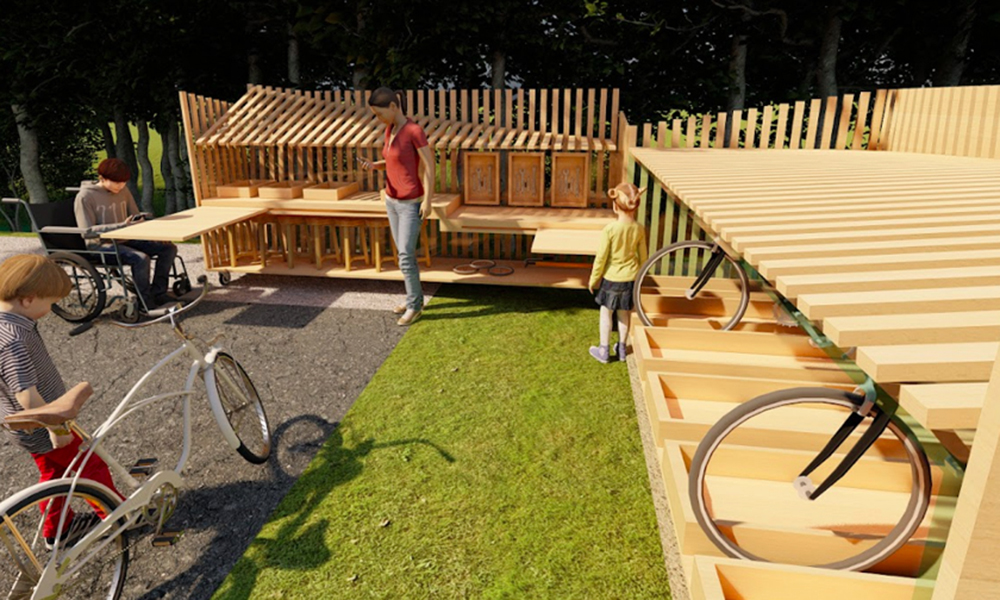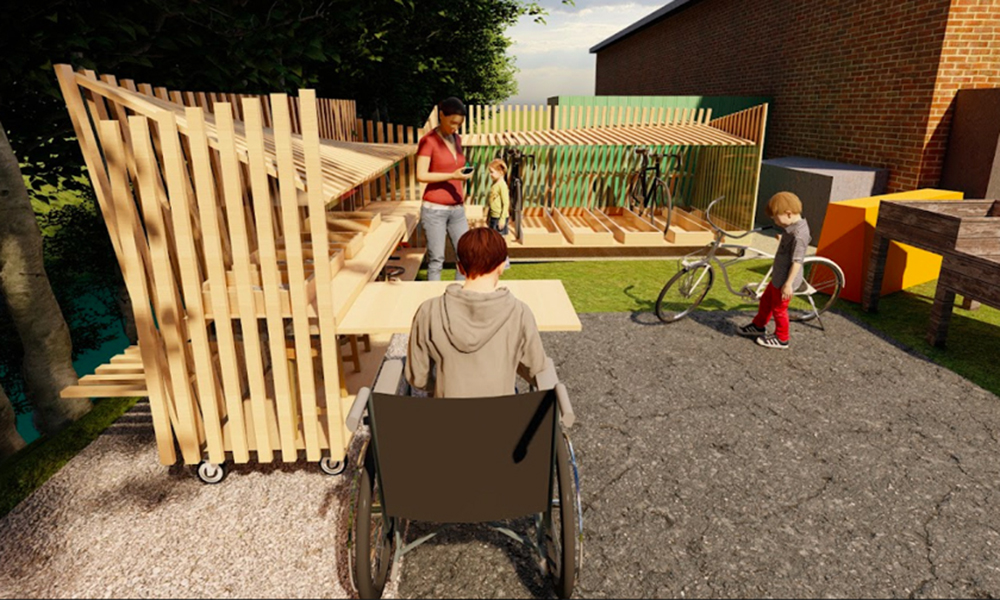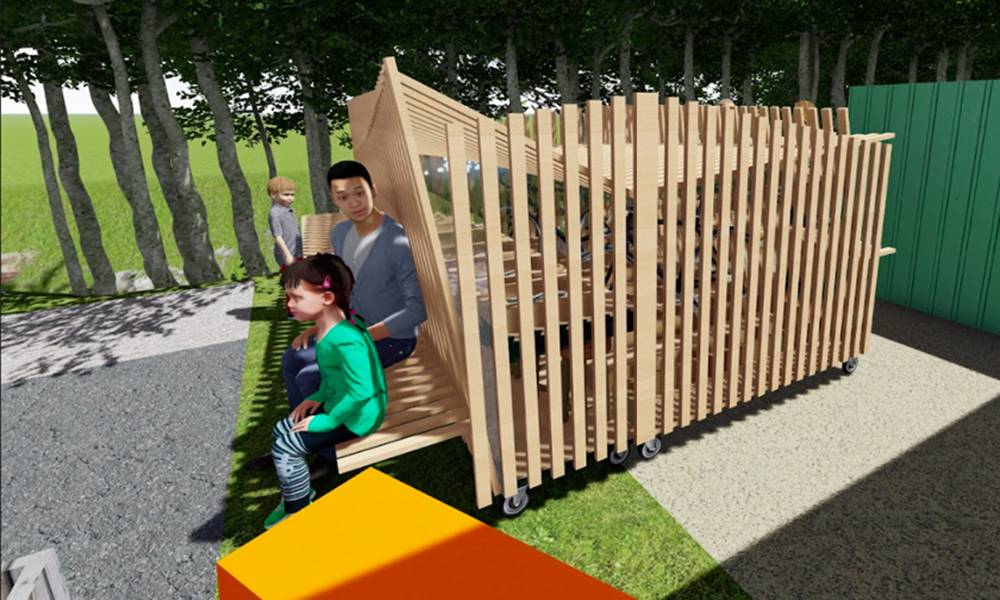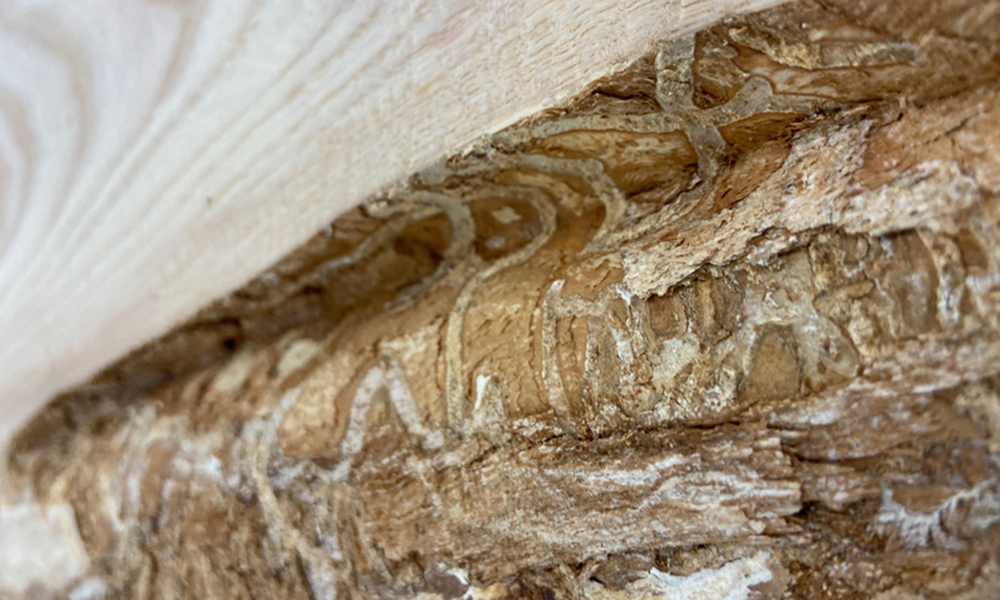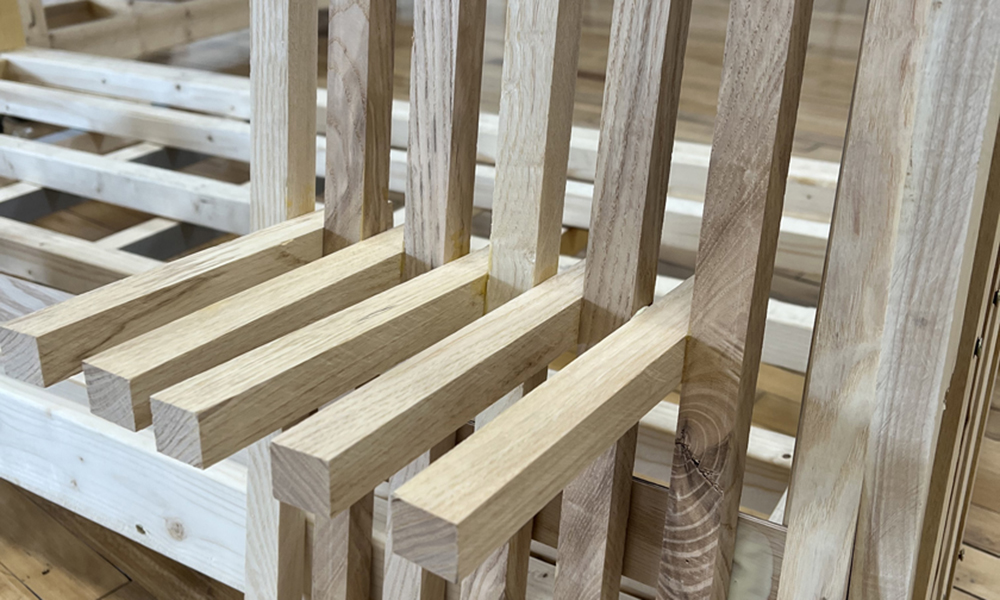On Friday, assistant professor of architectural design Nick Brinen and 15 students will unveil an innovative bike storage and repair station they built specifically for children in JMU's Occupational Therapy Clinical Education Services. The design incorporates Americans with Disabilities Act dimensions and standards that serve children in wheelchairs and of different abilities.
The outdoor ribbon cutting behind ArtWorks Gallery at 131 W. Grace St. at 3 p.m. will offer demonstrations and refreshments. Students from the School of Communication Studies have organized a press event to begin at 4 p.m.
Brinen planned the semester-long Design-Build Studio class expressly to fulfill this need identified by JMU facilities staffmember Wendy Schwister. The process not only provided students with experience planning and building the station, but it also gave them the opportunity to organize meetings for professional discussions with their client and partners.
Students worked closely with Harrisonburg's Public Works and the Virginia Department of Forestry. HPW donated approximately 60 milled boards of ash wood for the primary building material through Virginia's Urban Wood Program to generate awareness of the harmful emerald ash borer, a destructive wood-boring pest of ash trees that is killing off the tree species throughout Virginia.
The station works like a Swiss Army knife, in the sense that it "unfolds" to reveal many functions, such as tool storage, bike storage/security, work surfaces, bicycle stands, air pumps, seating and shade structure. Eight tool kits will be stored and supplied within the workstation.
Brinen hopes to continue using rescued ash wood and to collaborate with organizations outside of JMU in future projects like this one. As one of 10 finalists in 2022, he pitched the idea to the Madison Trust in March to obtain funding and received more than 100 percent of his $11,000 goal. These funds will support milling, material costs and student researcher stipends for three more public projects in the next three years.



